Product Images Rivastigmine Tartrate
View Photos of Packaging, Labels & Appearance
- BKR07930
- 1.5 mg Rivastigmine Tartrate Capsule Blister - Blister
- 1.5 mg Rivastigmine Tartrate Capsules Carton - Carton
- Figure 1: Time-course of the Change from Baseline in ADAS-cog Score for Patients Completing 26 Weeks of Treatment in Study 1 - Figure 1
- Figure 2: Cumulative Percentage of Patients Completing 26 Weeks of Double-blind Treatment with Specified Changes from Baseline ADAS-cog Scores. The Percentages of Randomized Patients who Completed the - Figure 2
- Figure 3: Frequency Distribution of CIBIC-Plus Scores at Week 26 in Study 1 - Figure 3
- Figure 4: Time-course of the Change from Baseline in ADAS-cog Score for Patients Completing 26 Weeks of Treatment - Figure 4
- Figure 5: Cumulative Percentage of Patients Completing 26 Weeks of Double-blind Treatment with Specified Changes from Baseline ADAS-cog Scores. The Percentages of Randomized Patients who Completed the - Figure 5
- Figure 6: Frequency Distribution of CIBIC-Plus Scores at Week 26 in Study 2 - Figure 6
- Figure 7: Time Course of the Change from Baseline in ADAS-cog Score for Patients Completing 24 Weeks of Treatment in Study 4 - Figure 7
- Figure 8: Distribution of ADCS-CGIC Scores for Patients Completing 24 Weeks of Treatment in Study 4 - Figure 8
- Structural Formula - Structure
Product Label Images
The following 12 images provide visual information about the product associated with Rivastigmine Tartrate NDC 60687-574 by American Health Packaging, such as packaging, labeling, and the appearance of the drug itself. This resource could be helpful for medical professionals, pharmacists, and patients seeking to verify medication information and ensure they have the correct product.
1.5 mg Rivastigmine Tartrate Capsules Carton - Carton
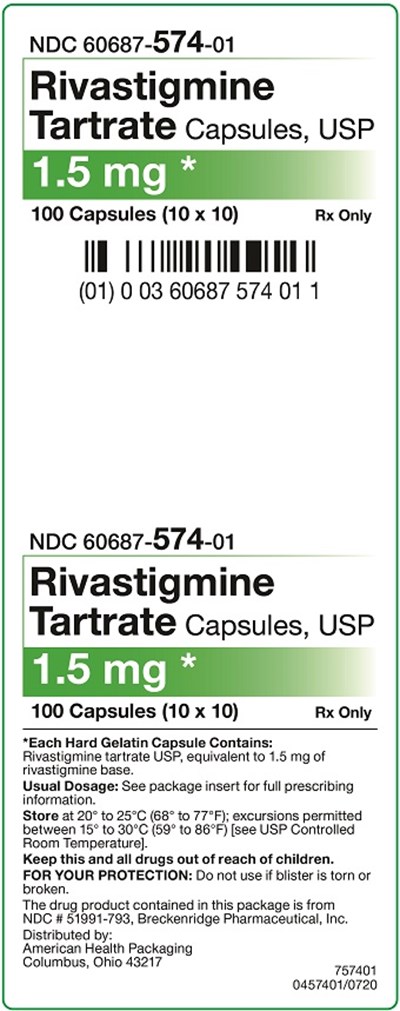
Rivastigmine Tartrate capsules are a prescription drug that contains 1.5 mg of Rivastigmine base. The capsules come in a package of 100 capsules (10x10) and should be stored at room temperature between 20°C to 25°C (68°F to 77°F). The capsules are distributed by American Health Packaging in Columbus, Ohio, and the drug product is from NDC #51991-793, Breckenridge Pharmaceutical, Inc. The usual dosage should be consulted from the package insert for full prescribing information.*
Figure 1: Time-course of the Change from Baseline in ADAS-cog Score for Patients Completing 26 Weeks of Treatment in Study 1 - Figure 1

Figure 2: Cumulative Percentage of Patients Completing 26 Weeks of Double-blind Treatment with Specified Changes from Baseline ADAS-cog Scores. The Percentages of Randomized Patients who Completed the - Figure 2

Figure 3: Frequency Distribution of CIBIC-Plus Scores at Week 26 in Study 1 - Figure 3
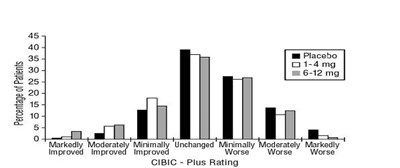
Not available. The text contains some readable words but they do not form a coherent or useful description. There are words that do not seem to be in the English language, and there are various typos and errors that make it difficult to understand the context or meaning of the text.*
Figure 4: Time-course of the Change from Baseline in ADAS-cog Score for Patients Completing 26 Weeks of Treatment - Figure 4
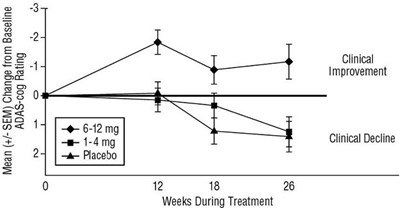
This appears to be a table or chart displaying clinical improvement and decline in patients during a certain treatment period. It includes the AADAS-cog rating, mean change from baseline, and weeks during treatment. No further information or context is available.*
Figure 5: Cumulative Percentage of Patients Completing 26 Weeks of Double-blind Treatment with Specified Changes from Baseline ADAS-cog Scores. The Percentages of Randomized Patients who Completed the - Figure 5

This appears to be a graph showing the cumulative percentage of patients for a clinical study, grouped by medication dosage and change in ADAS-cog score. The medication options appear to be "Placebo," "4mgly," and "12mgidy." The graph also includes a line indicating "No Change" and displays the change from baseline on a 30-point scale.*
Figure 6: Frequency Distribution of CIBIC-Plus Scores at Week 26 in Study 2 - Figure 6

This appears to be a graph or chart showing the percentage of patients and their level of improvement after taking either a placebo or doses of a medication ranging from 4-12mg. The vertical axis is labeled "Percentage of Patients" and the horizontal axis appears to be labeled "CIBIC-Plus Rating" with different levels of improvement listed along it, ranging from "Markedly Improved" to "Markedly Worse." Without further context, it is not clear what the medication or condition being treated is, but it appears to be a clinical trial showing the effectiveness of the medication compared to a placebo.*
Figure 7: Time Course of the Change from Baseline in ADAS-cog Score for Patients Completing 24 Weeks of Treatment in Study 4 - Figure 7
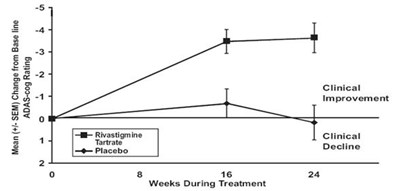
Figure 8: Distribution of ADCS-CGIC Scores for Patients Completing 24 Weeks of Treatment in Study 4 - Figure 8
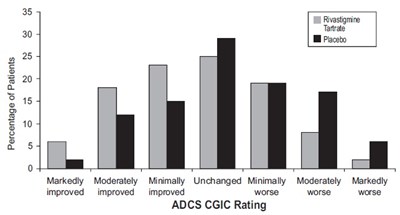
* The product label images have been analyzed using a combination of traditional computing and machine learning techniques. It should be noted that the descriptions provided may not be entirely accurate as they are experimental in nature. Use the information in this page at your own discretion and risk.


